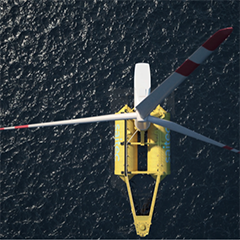Delivering climate neutrality requires adequate new national energy strategies, policies, and regulatory frameworks to be in place due to the massive energy transformation needed.
The European Union has been at the forefront of global climate action so far, and is the first major economy to put in place a legally binding framework to deliver on its pledges under the Paris Agreement and it is successfully transitioning towards a low emissions economy, targeting to reach climate neutrality by 2050.
We have useful lessons that can be drawn from the renewables energy industry, showing what can be achieved when there is a joint commitment by governments, energy companies and regulators.
Denmark’s energy transition experience can teach very valuable lessons. The transition in Denmark started more or less 50 years ago, when the oil crisis rocked the world in the 1970s and Danish industries had to shut down; at that time almost
90% of the energy was coming from imported oil.
From the oil crisis of the 70s, via the first offshore wind farm in 1991, today 44% of electricity in Denmark is supplied by wind and solar power. So far from the 90s their carbon emissions dropped by 38%, while its GDP more than doubled.
The significant share of green energy in the Danish electricity system is a result of ambitious national strategies laid down in the 70s and supported for their implementation by fit for purpose energy policies and regulatory frameworks.
In the 70s the oil crisis was the trigger for the start of the energy transition in Denmark: could the Covid-19 pandemic act similarly as a trigger and have a catalyst effect on the energy transition process of several countries?
Delivering climate neutrality requires adequate new national energy strategies, policies, and regulatory frameworks to be in place due to the massive energy transformation needed.
The European Union has been at the forefront of global climate action so far, and is the first major economy to put in place a legally binding framework to deliver on its pledges under the Paris Agreement and it is successfully transitioning towards a low emissions economy, targeting to reach climate neutrality by 2050.
We have useful lessons that can be drawn from the renewables energy industry, showing what can be achieved when there is a joint commitment by governments, energy companies and regulators.
Denmark’s energy transition experience can teach very valuable lessons. The transition in Denmark started more or less 50 years ago, when the oil crisis rocked the world in the 1970s and Danish industries had to shut down; at that time almost
90% of the energy was coming from imported oil.
From the oil crisis of the 70s, via the first offshore wind farm in 1991, today 44% of electricity in Denmark is supplied by wind and solar power. So far from the 90s their carbon emissions dropped by 38%, while its GDP more than doubled.
The significant share of green energy in the Danish electricity system is a result of ambitious national strategies laid down in the 70s and supported for their implementation by fit for purpose energy policies and regulatory frameworks.
In the 70s the oil crisis was the trigger for the start of the energy transition in Denmark: could the Covid-19 pandemic act similarly as a trigger and have a catalyst effect on the energy transition process of several countries?
To read the full content,
please download the PDF below.















